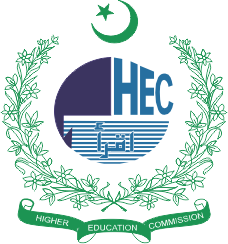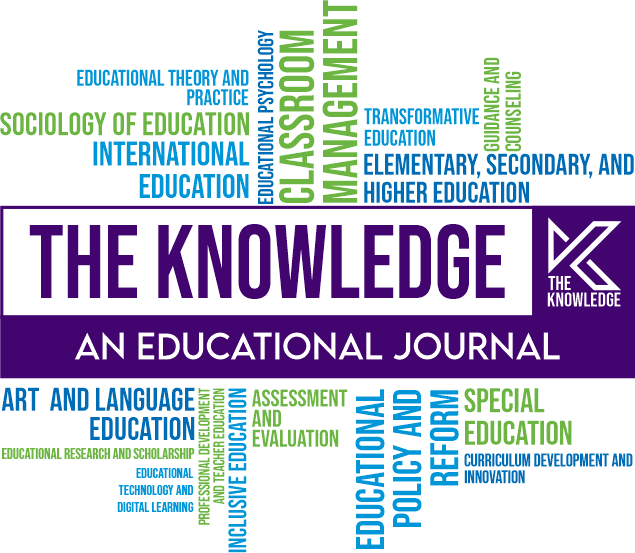Exploring Teachers’ Perceptions, Instructional Practices, and Challenges in Supporting Students with Learning Difficulties in Special Education
DOI:
https://doi.org/10.55737/tk/2k25c.43085Keywords:
Learning Difficulties, Teachers’ Perceptions, Instructional Practices, ChallengesAbstract
The purpose of this study was to investigate teachers' perceptions, instructional practices, and perceived challenges in providing education to students with learning difficulties (LDs) in Institutes for Slow Learners (ISLs) in Punjab, Pakistan. The population for this study included 185 teachers, and a census sampling technique was used, with a sample of 160 teachers (86% of the population). A mixed-method cross-sectional survey design was used for this study. The results of this study showed that teachers reported positive attitudes towards differentiated instruction and inclusive pedagogies, but their instructional practices were mostly based on traditional methods, with a strong emphasis on rote learning. The most significant perceived challenges were a lack of professional training, assistive technology, resources, and an inflexible curriculum. The findings of this study show that while teachers hold positive views on inclusive and evidence-based practices, systemic factors like lack of resources and professional development opportunities were the primary challenges to implementing these practices. The study suggests that targeted professional development programs, resource provision, and collaborative teaching approaches could enhance instructional practices and promote better learning outcomes for students with LDs.
References
AM, M. A., Hadi, S., Istiyono, E., & Retnawati, H. (2023). Does differentiated instruction affect learning outcome systematic review and meta-analysis. Journal of Pedagogical Research, 7(5), 18-33. https://doi.org/10.33902/jpr.202322021
Artiles, A. J., & Ortiz, A. A. (2002). English language learners with special education needs: Contexts and possibilities. Artiles, Alfredo J., Ed.; Ortiz, Alba A., Ed. English Language Learners With Special Education Needs., 15. https://files.eric.ed.gov/fulltext/ED482995.pdf
Avramidis, E., & Norwich, B. (2002). Teachers' attitudes towards integration / inclusion: A review of the literature. European Journal of Special Needs Education, 17(2), 129-147. https://doi.org/10.1080/08856250210129056
CAST. (2018). Universal design for learning guidelines version 2.2. Center for Applied Special Technology. http://udlguidelines.cast.org
Didion, L., Toste, J. R., & Filderman, M. J. (2020). Teacher professional development and student reading achievement: A meta-analytic review of the effects. Journal of Research on Educational Effectiveness, 13(1), 29-66. https://doi.org/10.1080/19345747.2019.1670884
Espada-Chavarria, R., González-Montesino, R. H., López-Bastías, J. L., & Díaz-Vega, M. (2023). Universal design for learning and instruction: Effective strategies for inclusive higher education. Education Sciences, 13(6), 620. https://doi.org/10.3390/educsci13060620
Evmenova, A. (2018). Preparing teachers to use universal design for learning to support diverse learners. Journal of Online Learning Research, 4(2), 147-171. https://www.learntechlib.org/primary/p/181969/
Florian, L. (2014). What counts as evidence of inclusive education? European Journal of Special Needs Education, 29(3), 286-294. https://doi.org/10.1080/08856257.2014.933551
Gottschalk, F., & Weise, C. (2023). Digital equity and inclusion in education: An overview of practice and policy in OECD countries. OECD Education Working Papers, (299), 0_1-75.
Hallahan, D. P., Kauffman, J. M., & Pullen, P. C. (2019). Exceptional learners: An introduction to special education (14th ed.). Pearson.
Herzig Johnson, S. (2023). The role of teacher self-efficacy in the implementation of inclusive practices. Journal of School Leadership, 33(5), 516-534. https://doi.org/10.1177/10526846231174147
Hess, K. (2023). Effective use of assistive technology to accommodate students with learning disabilities. https://repository.stcloudstate.edu/sped_etds/149?utm_source=repository.stcloudstate.edu%2Fsped_etds%2F149&utm_medium=PDF&utm_campaign=PDFCoverPages
Kaymakamoglu, S. E. (2017). Teachers’ beliefs, perceived practice and actual classroom practice in relation to traditional (teacher-centered) and constructivist (learner-centered) teaching (Note 1). Journal of Education and Learning, 7(1), 29-37. https://doi.org/10.5539/jel.v7n1p29
Khan, M. S. (2020). Teachers’ use of technology in Punjab’s schools: A comparative case study of a public, a private, and a partnership school (Doctoral dissertation, University of Leicester). https://figshare.le.ac.uk/articles/thesis/Teachers_Use_Of_Technology_In_Punjab_s_Schools_A_Comparative_Case_Study_Of_A_Public_A_Private_And_A_Partnership_School/12639245?file=23769833
Mahmood, N., & Iqbal, Z. (2018). Challenges Faced by Prospective Teachers during Teaching Practice: Connecting Theory to Practice. Bulletin of Education and Research, 40(2), 113-136. https://files.eric.ed.gov/fulltext/EJ1209790.pdf
Mastropieri, M. A., & Scruggs, T. E. (2018). The inclusive classroom: Strategies for effective instruction (6th ed.). Pearson.
Murawski, C. M. (2019). The role of content-focused coaching in fostering ambitious mathematics teaching practices in elementary classrooms (Doctoral dissertation, University of Pittsburgh).
Myronova, S., Dokuchyna, T., Rudzevych, I., Smotrova, O., & Platash, L. (2021). Current problems of teachers' readiness of higher educational institutions for implementing inclusive education. Revista Romaneasca Pentru Educatie Multidimensionala, 13(3), 151-165. https://doi.org/10.18662/rrem/13.3/445
Azzahra, I. M., Diana, R. R., Nirwana, E. S., Wiranata, R. R. S., & Andriani, K. M. (2022). Learning facilities and infrastructure based on the characteristics of Children with Special Needs in inclusive education. Al-Athfaal: Jurnal Ilmiah Pendidikan Anak Usia Dini, 5(2), 169-190. https://doi.org/10.24042/ajipaud.v5i2.14432
Sharma, U., Loreman, T., & Forlin, C. (2012). Measuring teacher efficacy to implement inclusive practices. Journal of Research in Special Educational Needs, 12(1), 12–21. https://doi.org/10.1111/j.1471-3802.2011.01200.x
Sims, S., Fletcher-Wood, H., O'Mara-Eves, A., Cottingham, S., Stansfield, C., Van Herwegen, J., & Anders, J. (2021). What are the characteristics of teacher professional development that increase pupil achievement? A systematic review and meta-analysis. https://discovery.ucl.ac.uk/id/eprint/10136274/1/Teacher-professional-development.pdf
Tomlinson, C. A. (2014). The differentiated classroom: Responding to the needs of all learners. ASCD..
UNESCO. (2020). Global education monitoring report 2020: Inclusion and education: All means all. paris. UNESCO. https://doi.org/10.54676/jjnk6989
Valiandes, S., & Neophytou, L. (2018). Teachers’ professional development for differentiated instruction in mixed-ability classrooms: investigating the impact of a development program on teachers’ professional learning and on students’ achievement. Teacher Development, 22(1), 123–138. https://doi.org/10.1080/13664530.2017.1338196
Wilcox, K. C., & Lawson, H. A. (2018). Teachers’ agency, efficacy, engagement, and emotional resilience during policy innovation implementation. Journal of Educational Change, 19(2), 181–204. https://doi.org/10.1007/s10833-017-9313-0




